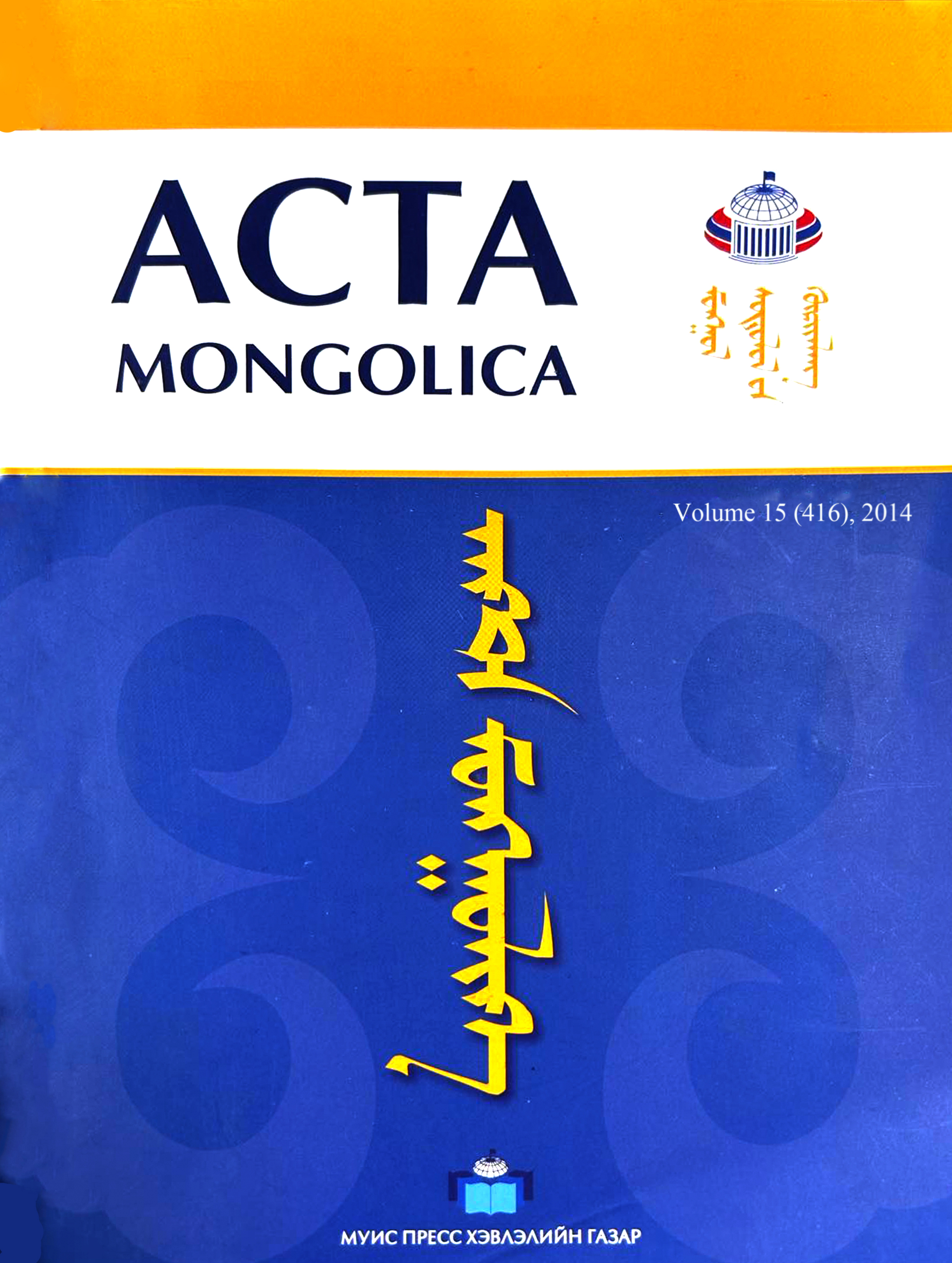Response of Mongolian Nomads to Climate Change during the past 800 years Stochastic Proxies for Reconstruction
Main Article Content
Abstract
This reviews how climate change affects the Mongolian nomadic cultures during the past over 800 years and how Mongolian Empire spreads across the Eurasia in a period of less than 100 years. Paleoclimatic proxy records imply the sunspot cycles of 11 years and glacial-interglacial transitions are predicted to have been relatively effective on rise and fall of human societies including of the Mongolian Empire and civil revolutions in Europe. Apparently, a famine that spread death and crisis across Europe is widely recorded in historical records of the early 1300s and linked to the start of the Little Ice Age. Therefore, it has been inferred to be compared climate change findings with historical accounts of famine and societal struggle in order to detect how the climate change impacted on the human societies. There would be a big challenge for Mongolian nomads for resolving how to adapt the further rising temperatures and new catastrophic events on the Earth, i.e., it requires a necessary of more empirical studies for reconstruction paleoclimate changes and of precise approaches for further predictions.
Article Details

This work is licensed under a Creative Commons Attribution-ShareAlike 4.0 International License.
References
Ana.C.B and Z.D.Feng, 2004. Relationships between human activities and ecological shifts in the southern Mongolia Plateau and its adjacent areas during the past 300 years: Abstracts of International Conference on Dialog between Cultures and Civilizations: Present State and Perspectives of Nomadism in a Globalizing World. Ulaanbaatar, Mongolia. Aug 9-14, 2004.
Christina Larson. Where Asia’ Monsoon Go to Die. Newsfocus. SCIENCE. Vol 337. 2012.www.sciencemag. org. 2012.
Greer.L and Swart. P.K. Decadal cyclicity of regional mid-Holocene precipitation: Evidence from Dominican coral proxies. PALEOCEANOGRAPHY, VOL. 21, PA2020, 2006.Mara Hvistendahl. Roots of Empire. Newsfocus. SCIENCE. Vol 337. 2012. www.sciencemag.org.
Hathaway.H.D. The Solar Cycle. Living Rev. Solar Phys. 7 (2010), 1.
Kashiwaya.K, S.Ochiai, G.Sumino, T.Tsukamoto, A.Szyniszewska, M.Yamamoto, A.Sakaguchi, N.Hasebe, H.Sakai, T.Watanabe, T. Kawai. Climato-hydrological fluctuations printed in long lacustrine records in Lake Hövsgöl, Mongolia. Quaternary International. Volume 219, Issues 1–2, 1 June 2010, Pages 178–187.
Mann, M.E, Zhang, Z, Rutherford, S. et al. (2009). “Global Signatures and Dynamical Origins of the Little Ice Age and Medieval Climate Anomaly”. Science 326 (5957): 1256–60. Bibcode:2009Sci...326.1256M
Mongolia Assessment Report on Climate Change. United Nations Environment Programme, 2009.
NOAA (National Oceanic and Atmospheric Administration)’s World Data Center for Paleoclimatology.
Orkhonselenge.A, S.K. Krivonogov, K. Mino, K. Kashiwaya, I.Y. Safonova, M. Yamamoto, K. Kashima, T. Nakamura, J.Y. Kim. Holocene sedimentary records from Lake Borsog, eastern shore of Lake Khuvsgul, Mongolia, and their paleoenvironmental implications”, Quaternary International Vol. 209-291, Pages 95-109, 2013. Owen Lattimore. The Geographical Factor in Mongol History. The Geographical Journal. Vol. 91. No. 1. pp. 1-16. 1938. www.jstor.org/stable. Pederson.N, Amy E. Hessl, Nachin Baatarbileg, Kevin J. Anchukaitis, and Nicola Di Cosmo. Pluvials, droughts, the Mongol Empire, and modern Mongolia. PNAS Early Edition. 2014.
Prokopenko. A.A., Galina K. Khursevich, Elena V. Bezrukova, Mikhail I. Kuzmin, Xavier Boes, Douglas F. Williams, Svetlana A. Fedenya, Nataliya V. Kulagina, Polina P. Letunova, Anna A. Abzaeva. Paleoenvironmental proxy records from Lake Hovsgol, Mongolia, and a synthesis of Holocene climate change in the Lake Baikal watershed. Quaternary Research 68 (2007) 2–17.
Ray Bradley PALEOCLIMATE: Enhanced: 1000 Years of Climate Change. Science 26. 2000: Vol. 288. No. 5470. pp. 1353-1355 DOI: 10.1126/science.288.5470.1353.

